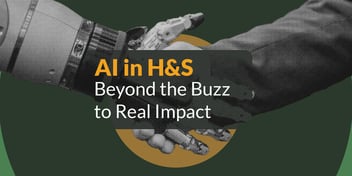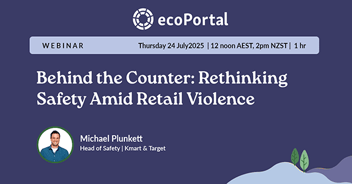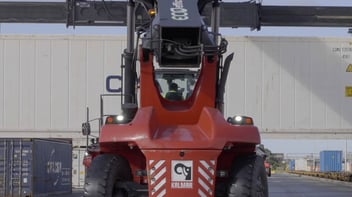In New Zealand, we’re unfortunately too familiar with the serious consequences of poorly-conducted health and safety practices. Every year, it is estimated that nationwide between 50 and 100 people die in workplace accidents - we say that’s 50-100 people too many.
Injuries and incidents can and do happen. Although some work environments are more high-risk than others, accidents do not discriminate. People are harmed doing all kinds of work, and risks and hazards exist in all types of workplaces.
Preventing and reducing incident numbers across an organisation is a fundamental health and safety objective. What is often overlooked, however, is that health and safety needs to be embedded in the company culture. The best way to create a safety culture is for organisations to examine critical lessons that can be learned from common incidents. Indeed, large incidents are often a product of failure to onboard key lessons from previous, smaller incidents.
In this article, we review common workplace incidents – and what organisations can do to learn from them and enable better health and safety outcomes.
Get fresh H&S insights weekly
Most common incidents and high-risk industries
According to recent WorkSafe data, between December 2019 and November 2020, 1367 notifiable incidents were reported in New Zealand (an incident is when someone has been exposed to serious and immediate risk of harm).
These are the Top 8 most common, categorical incident types:
- Electric shock
- Fall or release from height of any plant, substance or thing
- Collapse, failure or malfunction of, or damage to, any plant that requires authorisation
- Escape of gas or steam
- Implosion, explosion or fire
- Escape, spillage or leakage of a substance
- Collapse or partial collapse of a structure
- Escape of a pressurised substance
For context, here are the industries with the highest number of reported incidents:
- Construction
- Mining
- Manufacturing
- Transport, postal and warehousing
- Electricity, gas, water and waste services
In the aftermath
The aftermath of an incident or accident can be confusing with competing factors that need attention. From the physical and psychological injuries, to the environmental damage and stakeholder management, there are multiple flow-on effects of one incident.
At this point, it’s critical to have structured, clear health and safety procedures that provide clear and thorough insights into the incident to help all parties involved learn from any mistakes made. It’s the best way to ensure that your people remain safe - and that the incident does not happen again.
Learning from mistakes lead to better health and safety outcomes
Depending on the severity and complexity of the incident, learning from it might be a simple debrief process or a more formal investigation procedure. Either way, effective learning with clearly-outlined preventative steps requires an optimised health and safety programme.
Effective health and safety programmes, designed for learning, help to create a culture of safety through an organisation. Not every risk can be avoided, but effective systems can help to mitigate the degree of risk. Learning from small incidents ensures that larger incidents with severe consequences don’t happen.
have input into safety procedures and provide insight into what an effective safety management strategy looks like day-to-day.
3 ways in which health and safety professionals help organisations learn from workplace safety incidents
1. Information gathering and sharing
Incidents are information gold mines. Each occurrence should be recorded carefully, so that key points can be extracted and shared with the wider organisation.
When sharing information, the best lessons are kept simple and to the point. This way, every employee can engage with the lessons learned. Address employees with targeted, specific messaging that uses clear and simple language. Easy-to-understand key points will remain in peoples’ minds far longer than extensive, unnecessary information.
2. Collaboration, not criticism
Learning from incidents requires a mindset shift from pointing fingers and blaming one another, to working together to create a long-lasting solution.
Instead of sitting down and finding an individual to blame for an incident, a learning meeting should be focused on total collaboration to make sure that such an incident is avoided in the future. Pointing fingers only breeds contempt between workers and pits people against each other.
3. Engagement
Every worker has, and should have a voice. When discussing an incident, each worker should feel comfortable enough to speak up and put forward their perspective.
Addressing an incident and figuring out key learnings is not just a management role. The most effective learning takes place when every person involved is engaged and actively taking part in finding solutions.
Managers aren’t superhuman and cannot be expected to know the intricacies of every organisational process. Therefore, it’s critical that employees on the ground have input into safety procedures and provide insight into what an effective safety management strategy looks like day-to-day.
Learnings to inform better workplace safety
Extracting the essential lessons and potential changes for the workplace after an incident is often an arduous process; but one that is critical to minimise further, more significant incidents.
When a focus is placed on learning lessons from each incident, the infrastructure is put in place so that future risk is minimised. The combination of gathering key information, a mindset shift from criticism to collaboration, with each employee having a voice, creates a strong company-wide safety culture.
After all, health and safety is not simply a flyer on a wall reminding employees to be safe - it’s a continuous way of working that becomes a shared responsibility.
Want to know more about how to create a better health and safety culture? View ecoPortal smarter safety videos. ecoPortal health and safety software can also help your business. Try a demo or get in touch with the team at ecoPortal.









